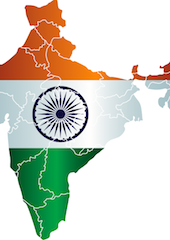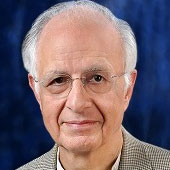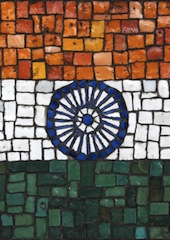India: Economic Future and Coalition Politics
Despite the desire for strong leadership, India still fears the autocracy of single-party rule and a powerful central leader.
December 17, 2013

This is part four of a four-part Globalist Paper on India’s future. Return to part three.
There was great uncertainty in India in 2000, as there is now, about what the outcome of a national election would be. It is most likely that no party will win a sufficient majority to form a national government on its own.
Why I am an India Optimist
Three Scenarios for the Future
Inclusion, Governance and Enterprise Strategy
Learning to Collaborate, Learning to Implement
Economic Future and Coalition Politics
While dreaming that a single party and a strong central leader may emerge, there was then as there is now, the fear of the harm an autocracy could inflict on India’s democracy.
The memory of Indira Gandhi’s Emergency government, which suspended civil liberties in the 1970s, lingered in 2000, and though fading, is not forgotten even now.
The purpose of scenarios is not to predict. It is to anticipate all plausible outcomes. Scenarios also serve to validate whether a proposed strategy will make the enterprise successful in all plausible scenarios.
The first question is whether there will be a coalition government or a single party government at the center and whether the party at the center will also rule the majority of the states. Money is being wagered that it will be the former, i.e., a politically fragmented governance of the country.
The hope of many was for the latter, i.e., a single party political configuration, which they thought would give more stability to the country as well as ability to the central government to make policies applicable throughout the country.
The second question was what will be the quality of the coalition government or the single party government. Thus, four alternative outcomes of national elections could be envisaged. They are described here in broad brush terms.
Four political outcomes
A. Kaleidoscope. In this configuration power in the center and in the states is shared by several parties. The quality of the political configuration could be either:
A1. Federal Harmony (The parties respect each other and learn to work together), or
A2. You stab my back I stab yours (Politicians provide front page entertainment for the media)
B. Monochrome. In this configuration, one party dominates throughout the country. The quality of the governance could be either:
B1. Ramrajya (Magnanimous enlightened leadership, with losers cooperating in the nation-building agenda), or
B2. Volcano (Seething trouble, with losers waiting to strike)
Two of these outcomes (A1 and B1) are better than the other two (A2 and B2).
Where will we end up? That’s hard to tell. In 2013, the public discourse, fuelled by the Indian media, is too busy with the debates of the moment, the daily swings of the stock market and hourly trending of tweets.
Managing sustainable growth
Still, the economic fundamentals on which the optimistic projections of India’s growth were based in the earlier BRICs study (and by other think-tanks’ too) have not changed between 2003 when they were made and now.
India’s young demography is unchanged. The children have already been born and are growing up year after year whatever the condition of India’s economy may be. India’s need for infrastructure — for transport, power, education, health and urban development — remains to be fulfilled.
India also continues to be a consumption-led economy with very low levels of consumption so far. Therefore, India is a huge potential market. And the economy has been open to the world, except in very few sectors (and remains so).
When the economy’s growth rate began to slip, the economic advisers sitting beside the driver, watching the GDP speedometer on the dashboard, told the driver to push harder on the accelerator. More economic reforms they said: open up the economy even further.
Reform or stall
Meanwhile, the systems thinkers and scenarists in the back-seat, listening to the sound of the engine and transmission, had been tapping the driver’s shoulder saying it is time to down-shift, to fix the institutions. They argued this was the only way to make sure that more power could go from the engine to the wheels, or else the car would soon stall. As it has now.
In China, with its single party government throughout the country, analysts may gauge which way China’s economy may go in the next ten years from the pronouncements of leaders at the top.
In a functioning democracy, which India is, the direction India’s economy will go in the next ten years cannot be gauged from the pronouncements of elected leaders at the top who will change. In India, one has to listen to the sounds of the democratic system within.
Why I, a back-seat India systems observer, am now an optimist is because I am hearing the transmission down-shift into the right gears. The need for institutional reforms is being acknowledged.
Early signs suggest the emerging architecture of the fundamental reforms may be of the required sort. This will give the car the power it needs to overcome the obstacles it is encountering on its path.
Signs of emerging reform architecture
1. Right to Information Act: RTI legislation came into force in 2005 after sustained activism from civil society and allowed the public to demand information from all government bodies. In 2010-11, more than 5.2 million RTI applications were filed, and 96% of these applications were responded to in timely fashion.
2. Right to Service: 17 state governments have enacted right to service laws to provide time-bound delivery of services and mechanisms for punishing errant public servants deficient in meeting timelines. Right To Service Acts reduce corruption and increase accountability and transparency. Similar legislation at the central level is scheduled to be discussed in the ongoing Winter Session of Parliament.
3. E-governance: The Department of Electronics and Information Technology has identified 27 projects where e-Governance can be rapidly rolled out as part of a National e-Governance Plan. These projects have clearly defined objectives, scope, and implementation timelines, and often rely on public private partnerships with India’s world renowned IT companies. Projects include the Passport Seva Project (Passports delivered within 3 days), single window clearance for business, and e-Procurement systems among others.
4. Business Regulatory Reform: India ranks very low in rankings of countries for ‘ease of doing business.’ 80% of regulations that affect businesses are in the domain of the States.
The ‘tuning up’ of business regulations must be done collaboratively amongst several stakeholders including business, labor unions, and civil society, to ensure their effectiveness, while reducing administrative and implementation burdens on business.
Therefore the States must focus on instituting collaborative processes for systematically improving business regulations, and several are. In Rajasthan, over the last two years, 65 regulatory procedures were analyzed in detail, and 104 reform recommendations were made to the state government.
5. ‘Total Village Management’: Total Village Management (TVM) is a combination of processes, metrics, impact measurement and social audits for integrated rural development based on the principles of Total Quality Management.
It was created by an NGO and has been implemented in 150 villages in Jharkhand. TVM enables village citizens to collaboratively analyze their village’s needs and then ‘pull in’ the required assistance from government schemes. Incomes of the citizens in villages where TVM has been applied have risen much faster than neighboring villages.
6. Anti-Corruption Politics: India has, in recent years, seen a series of mass demonstrations and protests for the establishment of legislation against endemic political corruption. Although the incumbent national government did not ultimately pass any legislation, the topic of corruption in governance was firmly established as an election issue.
A faction of the anti-corruption protesters went on to form a political party (Aam Aadmi Party) just a year ago. This party’s mission is to change the way political parties are run, to make them internally more democratic and accountable.
Like David to the ruling Congress Party’s Goliath, the party has done remarkably well in the recently concluded elections in the Delhi state. There it fought a campaign almost entirely funded by individual contributions and run by enthusiastic citizens who took time off from work to help the party.
Not only did the new party get far more votes and seats than the Congress, which led the state for the past 15 years, but the party’s leader also unseated Congress’ Chief Minister in her own district.
Managing through measurement
These are all positive signs of emerging change and progress toward institutional reforms. So the economic car of India is starting to run more smoothly.
To further assist the government in the driver’s seat, the Planning Commission should install a measure of institutional conditions — an RPM gauge, if you will — on the dash-board for the Indian government to watch, beside the GDP speedometer.
Because one can manage better what one can measure, I would recommend three more gauges on the dashboard beside the GDP speedometer: a good indicator of environmental sustainability; a better measure of ‘inclusion’; and an institutional condition indicator (the RPM gauge I have suggested already).
To return to the beginning of this Globalist Paper, go here.
Takeaways
India remains in fear of the harm autocracy could do to its democracy, after a brief experience with it in the ‘70s.
The purpose of scenarios is not to predict. It is to anticipate all plausible outcomes.
India is a consumption-led economy with very low levels of consumption so far. So, India is a huge potential market.
India needs more gauges than GDP growth. It needs eco sustainability, inclusivity and institutional reform indicators.

